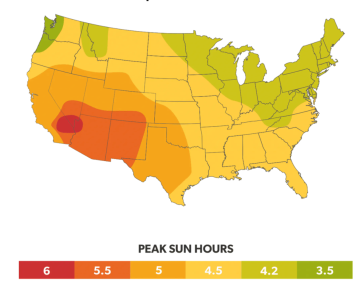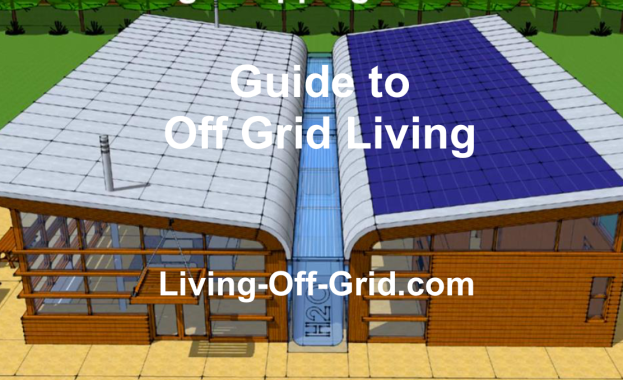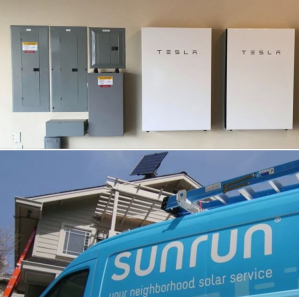Searching for a cost-effective solar power kit
to provide electricity for your OffGrid Shed, Cabin or Container Home or Tiny House?
Cascade Solar offers the best deal/cost-per-watt on turnkey solar power systems that provide everything needed, including batteries!
August 25, 2023 – Cascade Solar is now offering turnkey solar power systems in 1-kW, 3-kW, 5-kW, 8-kW and 10-kW plug and play configurations for best price you will find anywhere in the United States. All of their systems include premium -0/+5% solar panels, 97% efficiency power inverters, 12v 250 Ah AGM batteries, combiner boxes, PV electricity wiring, MC4 connectors, and roof or ground mount racking systems.
Each one of the solar power arrays featured below offers the best prices that were negotiated due to Cascade’s high-volume discounts. All of these systems include at least one battery and a power inverter with plenty of room to add additional strings of solar panels as a homestead expands.
In other words, these systems are engineered to make it easy to add more solar panels and batteries as more and more solar electricity is needed or as the customer has more funds to spend on solar on a year-by-year basis.
Solar systems/battery banks can be expanded as budget allows upgrades:
- The low-end systems can be expanded from 1.2-kW up to 5-kW of solar panels.
- The high-end systems can be expanded from 5-kW up to 10-kW of solar panels.
- All Battery Banks include at least one 10-hour AGM battery. Extra batteries $439 each. Lithium Ion battery packs are available at a significantly higher price!
- We carry Solar Panels from Q-Cell (quoted below) and LG (available upon request).
U.S. Federal Solar Tax Credit – 30% Tax Credit Write Off on 2024 Tax Returns
The U.S. 26% federal solar tax credit expires on 12/31/20. In addition to the great prices, customers who pay taxes at the end of the year can write off 26% of the total cost of their solar system installation on their 2023 federal tax return. Some states also offer solar tax credits.
1.2-kilowatt Turnkey Off Grid Solar System for RVs, Tents & Small Sheds – $5,162.46
$5,162.46
-$1,342.23 (tax write off) =
—————-
$3,820.23 Total Out of Pocket
- Four 315-watt Q-Cells Mono-Crystalline -0/+5% ( 315-w panels X 4 = 1,260 watts)
- DC Combiner Box – Breaker, SPD, Switches – 4 solar string inputs, 1 string output
- 5k 97% Efficient Hybrid Inverter with built-in Charge Controller/MPPT – Up to 5,000 watts
- One 12v 250 Ah AGM Battery* with Cables – (Extra batteries only $439 each)
- PV Electrical Wiring – 150 ft roll
- Plug and Play MC4 Connectors for connecting panels
- Full Ground-Mount Racking System
- 1,260-watts x 5 sun hours per day = 6.3-kWh per day/189-kWh per month
- At $0.11 cents per watt, this is worth $20.79 worth of free electricity
- Break even point. Cost $5,162.47/$20.79 month free electricity = 248 months to break even
- Total Cost $5,162.46 / 1,260 watts = $4.09 per watt for comparison shopping
- Federal Tax Credit = $1,342.23 can be deducted from 2024 U.S. federal tax returns
- Doesn’t include Taxes or Shippping that are based on final shipping address
3.1-kilowatt Turnkey Off Grid Solar System for Cabins, Yurts and Log Homes – $8,340.45
$8,340.45
-$2,168.51 (tax write off) =
—————-
$6,171.94 Total Out of Pocket
- Ten 315-watt Q-Cells Mono-Crystalline -0/+5% ( 315-w panels X 10 = 3,150 watts)
- DC Combiner Box – Breaker, SPD, Switches – 4 solar string inputs, 1 string output
- 5k 97% Efficient Hybrid Inverter with built-in Charge Controller/MPPT – Up to 5,000 watts
- Four 12v 250 Ah AGM Batteries with Cables – 1,000 Ah battery bank (extra batteries $439)
- PV Electrical Wiring – 150 ft roll
- Plug and Play MC4 Connectors for connecting panels
- Full Ground-Mount Racking System
- 3,150-watts x 5 sun hours per day = 15.75-kWh per day/472.5-kWh per month
- At $0.11 cents per watt, this is worth $51.97 worth of free electricity
- Break even point. Cost $8340.45/$51.97 month free electricity = 160 months to break even
- Total Cost $8,340.45 / 3,150 watts = $2.64 per watt for comparison shopping
- Federal Tax Credit = $2,168.51 can be deducted from 2024 U.S. federal tax returns
- Doesn’t include Taxes or Shippping that are based on final shipping address
5.0-kilowatt Turnkey Off Grid Solar System for Cabins, Yurts and Log Homes – $13,262.78
$13,262.78
-$3,448.32 (tax write off) =
—————–
$9,814.46 Total Out of Pocket
- Sixteen 315-watt Q-Cells Mono-Crystalline -0/+5% ( 315-w panels X 10 = 5,040 watts)
- DC Combiner Box – Breaker, SPD, Switches – 4 solar string inputs, 1 string output
- 5k 97% Efficient Hybrid Inverter with built-in Charge Controller/MPPT – Up to 5,000 watts
- Six 12v 250 Ah AGM Batteries w/Cables = 1,500 Ah battery bank (extra batteries $439 each)
- PV Electrical Wiring – 150 ft roll
- Plug and Play MC4 Connectors for connecting panels
- Full Ground-Mount Racking System
- 5,040-watts x 5 sun hours per day = 25.2 kWh per day/756 kWh per month
- At $0.11 cents per watt, this is worth $83.16 worth of free electricity
- Break even point. Cost $13,262.78/$83.16 month free electricity = 159 months to break even
- Total Price of $13,262.78 / 5,040 watts = $2.63 per watt for comparison shopping
- Federal Tax Credit = $3,448.32 can be deducted from 2024 U.S. federal tax returns
- Doesn’t include Taxes or Shippping that are based on final shipping address
8.1-kilowatt Turnkey Off Grid Solar System for Cabins, Yurts and Log Homes – $18,667.89
$18,667.89
-$4,853.65 (tax write off) =
—————–
$13,814.24 Total Out of Pocket
- Twenty-six 315-watt Q-Cells Mono-Crystalline -0/+5% ( 315-w panels X 26 = 8,190 watts)
- DC Combiner Box – Breaker, SPD, Switches – 4 solar string inputs, 1 string output
- 10k 97% Efficient Hybrid Inverter with built-in Charge Controller/MPPT – Up to 10,000 watts
- Eight 12v 250 Ah AGM Batteries with Cables = 2,000 Ah battery bank (extra batteries $439)
- PV Electrical Wiring – 150 ft roll
- Plug and Play MC4 Connectors for connecting panels
- Full Ground-Mount Racking System
- 8,190-watts x 5 sun hours per day = 40.95-kWh per day/1228.5-kWh per month
- At $0.11 cents per watt, this is worth $135.13 worth of free electricity
- Break even point. Cost $18,667.89/$135.13 month free electricity = 138 months break even
- Total Cost $18,667.89 / 8,190 watts = $2.27 per watt for comparison shopping
- Federal Tax Credit = $4,853.65 can be deducted from 2024 U.S. federal tax returns
- Doesn’t include Taxes or Shippping Costs that are based on final shipping address
10.0-kilowatt Turnkey Off Grid Solar System for Cabins, Yurts and Log Homes – $19,942.47
$19,942.47
-$5,185.04 (tax write off) =
—————–
$14,757.43 Total Out of Pocket
- Thirty-two 315-watt Q-Cells Mono-Crystalline -0/+5% ( 315w panels X 26 = 10,080 watts)
- DC Combiner Box – Breaker, SPD, Switches – 8 solar string inputs, 1 string output
- 10k 97% Efficient Hybrid Inverter with built-in Charge Controller/MPPT – Up to 10,000 watts
- Eight 12v 250 Ah AGM Battery with Cables = 2,000 Ah battery bank (extra batteries for $439)
- PV Electrical Wiring – 150 ft roll
- Plug and Play MC4 Connectors for connecting panels
- Full Ground-Mount Racking System
- 10,080-watts x 5 sun hours per day = 50.4-kWh per day/1,512-kWh per month
- At $0.11 cents per watt, this is worth $166.32 worth of free electricity
- Break even point. Cost $19,942.47/$166.32 month free electricity = 119 months break even
- $19,942.47 / 10,080 watts = $1.97 per watt
- Federal Tax Credit = $5,185.04 can be deducted from 2024 U.S. federal tax returns
- Doesn’t include Taxes or Shippping Costs that are based on final shipping address
Which Solar Electric Kit Will Be Enough to Power My Entire Home?
For most off grid sheds, cabins and homes in the United States, one of the solar systems above should provide more than enough solar electricity to power your entire off grid homestead. These off grid systems are not designed to be used with a grid-tied home, but will accomodate a backup generator should it be needed during long periods of cloudy days when needed to charge up the battery bank.
Most of these systems price out to be less than a $3.00 per watt, which is way more affordable than most solar installation companies will charge you. You will save thousands of dollars by doing all of the solar installation work yourself.
We do recommend hiring a journeyman electrician to oversee the wiring and grounding portion of the installation. And maybe a general handyman to help with pouring the cement footers for the ground mount and digging trenches and/or installing conduit pipe when running wiring underground from the array to the house or utility closet where the batter banks are located.
All of solar power kits, ranging from 1-kW to 10-kW system include everything you’ll need including solar panels, power inverter with built in MPPT charge controller, batteries, wiring and the racking system for a ground mount. They are complete turnkey solar systems that will provide sufficient electricity to power entire homes and/or businesses.
1st Question: How Much Solar Will Your Off Grid Homestead Need?
To figure out the how much solar your home will need, make a list of all the appliances you use in your current home: satellite dish, TV, computer, kitchen appliances, refrigerator, freezer, washer/dryer, lights, etc. You can either use a Kill a Watt Meter or an electric calculator to calculate out how much electricity everything uses. Another way to estimate electric needs is to gather your last 12 months of electric bills to see how many total kWh you are using now on a monthly basis and add up the last 12 months. Most homes use about 30-kWh per day or 900-kWh per month.
2nd Question: How Much Space Is Needed to Build an Ground Mount Solar Power Array?
A 1-kW of solar power panels typically requires 100 square feet or less of space. So 1-kW of panels will take up approximately 100 sq. ft. of space. 3-kW would take up to 300 sq. ft. 10-kW will need 1,000 sq. ft. Solar Panels and batteries should be as close as possible to where the electricity will be used to prevent line loss.
3rd Question: How Much Solar Energy Will My Solar System Generate?
The amount energy that can be generated by solar panels is dependent on how many sun hours your homestead receives each day. PVWatts is a good resource for determining how many watts your system will generate. Or you can look at a solar sun hour map below. In the southwest United States, most places in Arizona, California, New Mexico, and Texas will receive 5 sun hours during winter months and up to 8 hours of sun during the summer months.
Actual power generated will vary based on location, equipment and installation factors. Refer to your electric utility bill to find the actual kWh used per month and then find the solar system that produces a similar amount of kWhs.
What is included in my Solar Power Installation Kit?
Our kits provide all the solar components you need from start to finish:
- Solar Panels – PV modules with 25-year warranties, high effiicency and a -0/+5% power tolerance.
- Off Grid Hybrid Inverters – includes a 97% efficient MPPT battery charge controller
- Wiring and Waterproof MC4 Connectors – everything you need to connect the solar panels, batteries to the home’s electric utility panel/breaker box
- Racking and Attachments – Industrial strength ground racking mounts for installing solar panels on the ground to allow for easy cleaning and snow removal.
- Solar Power Monitoring Displays – Free with every kit purchase! Digital read out displasy allow customers to view and analyze theiring solar energy production in real-time.
- Not Included – Concrete, schedule 40 pipe, conduit pipe, fittings, breakers, junction boxes and a sub panel (if required). All these items can be purchased at any electrical supply shop, Home Depot or Lowes, and will typically cost ~$1,500.
Can I Install a 1-kW to 10-kW Ground Mount System Myself?
- Most people can install a ground-mounted solar system on their own in a couple of days.
- Our kits use industry leading solar panels, inverters, and racking systems specifically selected and combined to make do-it-yourself installation possible.
- A homeowner who has wired up AC outlets before and is comfortable working with electricity should be able install our off grid solar systems.
- If self-installation is not for you, we can help you find a local NABCEP-certified solar installer to help you with the process in your area.
What does a typical solar installation process include?
A typical solar ground-mounted system for a home can be installed within one or two weekends once a permit is obtained from your city or county. After that, it’s just several easy steps until you’re system is producing solar electricity from the sun’s endless and free energy.
- First, the racking and mounting system must be installed. This is the most laborious process of the solar installation process. You have to dig deep holes and pour concrete footers.
- Once the racking and mounting system is secured in the ground, the solar panels and inverters can be quickly installed. The inverter(s) are then tied to the home through a dedicated circuit breaker in the main service panel.
- When the installation is complete, your city or county inspector must sign off on it. You can accomplish this by scheduling an inspection meeting with them.
- Lastly, you must get the system inspected by the local permit authority.
What If I Need to Hire a Contractor to Do All of the Installation Work for Me?
Any licensed general, electrical or solar contractor can install our solar kits. If you select to hire a contractor to install your solar kit, you should expect to pay approximately $1.00 per watt for labor, wire, conduit, fittings, breakers and other miscellaneous electrical components to complete the solar system installation.
# # #
Sound good, but you’d like to talk to a real person to walk you through the solar purchase decision and solar installation process? Fill out this form so we can review your property location, examine possible shade from tree cover and calculate the number of solar hours that your property should receive and how many kWhs your solar system should produce.









